The Exorcist (film)
8.2 /10 1 Votes
87% Rotten Tomatoes Duration Language English | 8/10 IMDb 82% Metacritic Genre Horror Country United States | |||||||||||||||||||||||||||||||||
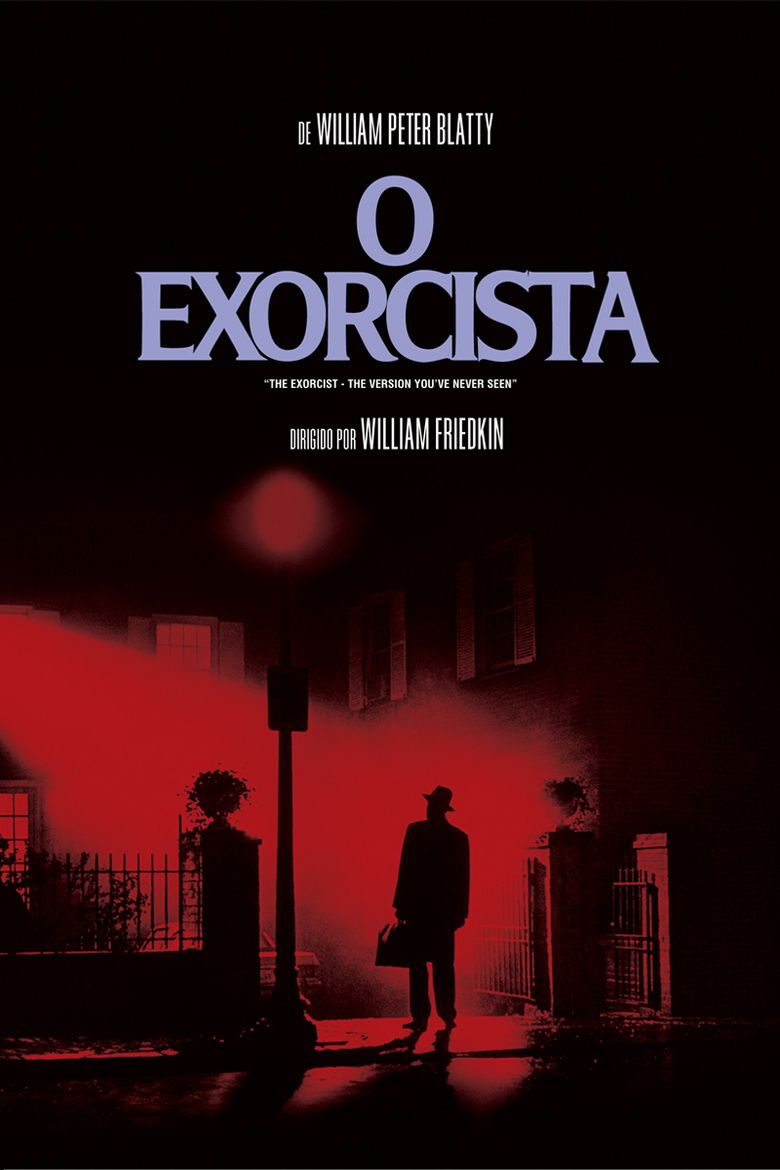 | ||||||||||||||||||||||||||||||||||
Release date December 26, 1973 (1973-12-26) Writer William Peter Blatty (written for the screen by), William Peter Blatty (novel) Cast (Regan), (Father Merrin), (Chris MacNeil), (Father Karras), Lee J. Cobb (Lt. Kinderman), (Sharon)Similar movies Insidious: Chapter 2 , Sometimes They Come Back... Again , Ghostbusters , Grace , This Is the End , Tagline Something almost beyond comprehension is happening to a girl on this street, in this house... and a man has been sent for as a last resort. This man is The Exorcist. | ||||||||||||||||||||||||||||||||||
The exorcist 1 5 movie clip a harrowing house call 1973 hd
The Exorcist is a 1973 American supernatural horror film, adapted by William Peter Blatty from his 1971 novel of the same name, and starring Ellen Burstyn, Linda Blair, Max von Sydow, and Jason Miller. The film is part of The Exorcist franchise. The book, inspired by the 1949 exorcism of Roland Doe, deals with the demonic possession of a 12-year-old girl and her mother's attempts to win back her child through an exorcism conducted by two priests. The adaptation is relatively faithful to the book, which itself has been commercially successful (earning a place on The New York Times Best Seller list). The film experienced a troubled production; even in the beginning, several prestigious film directors including Stanley Kubrick and Arthur Penn turned it down. Incidents, such as the toddler son of one of the main actors being hit by a motorbike and hospitalized, attracted claims that the set was cursed. The complex special effects used as well as the nature of the film locations also presented severe challenges. The film's notable psychological themes include the nature of faith in the midst of doubt as well as the boundaries of maternal love as a mother has to do whatever she can to save her child.
Contents
- The exorcist 1 5 movie clip a harrowing house call 1973 hd
- The exorcist 3 5 movie clip head spin 1973 hd
- Plot
- Cast
- Writing
- Casting
- Direction
- Filming
- Father Merrins arrival scene
- The spider walk scene
- Special effects
- Alleged subliminal imagery
- Titles
- Music
- Release
- Special edition 25th anniversary VHS and DVD release
- Extended edition DVD releases
- Blu ray
- The Exorcist The Complete Anthology
- Box office
- Critical response
- UK reception
- Audience reception
- Academy Awards
- Golden Globe Awards
- Library of Congress
- American Film Institute Lists
- Alternate and uncut versions
- References
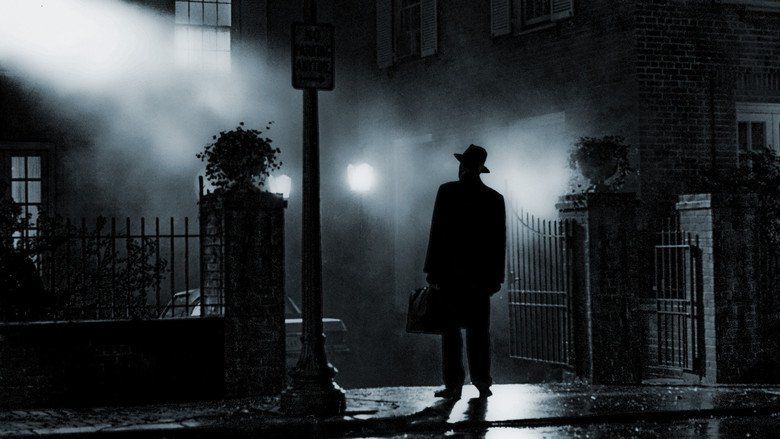
The Exorcist was released theatrically in the United States by Warner Bros. on December 26, 1973. Though booked at first in only twenty-six theaters across the U.S., it soon became a major commercial success. The film earned ten Academy Award nominations, winning Best Sound Mixing and Best Adapted Screenplay. It became one of the highest-grossing films in history, grossing over $441 million worldwide in the aftermath of various re-releases, and was the first horror film to be nominated for the Academy Award for Best Picture.
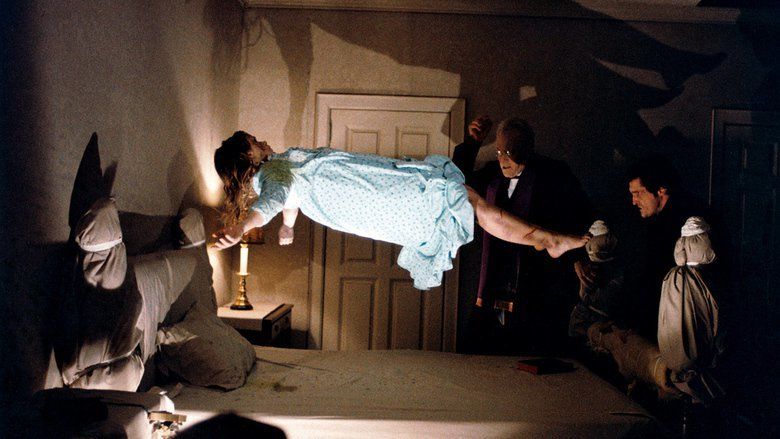
The film has had a significant influence on popular culture. Several publications have regarded it one of the best horror films in history. For example, it was named the scariest film of all time by Entertainment Weekly in 1999, by Movies.com in 2010, by viewers of AMC in 2006, and by the editors of Time Out in 2014. CHUD.com rated it as the 10th best film of all time in 2014. In addition, a scene from the film was ranked #3 on Bravo's The 100 Scariest Movie Moments. In 2010, the Library of Congress selected the film to be preserved as part of its National Film Registry as being "culturally, historically, or aesthetically significant". On January 22, 2016, 20th Century Fox Television announced they were developing a television series of The Exorcist. It premiered on September 23, 2016.
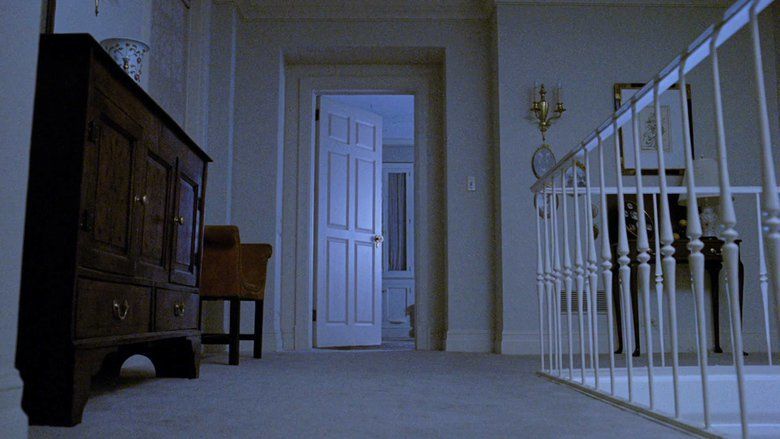
The exorcist 3 5 movie clip head spin 1973 hd
Plot
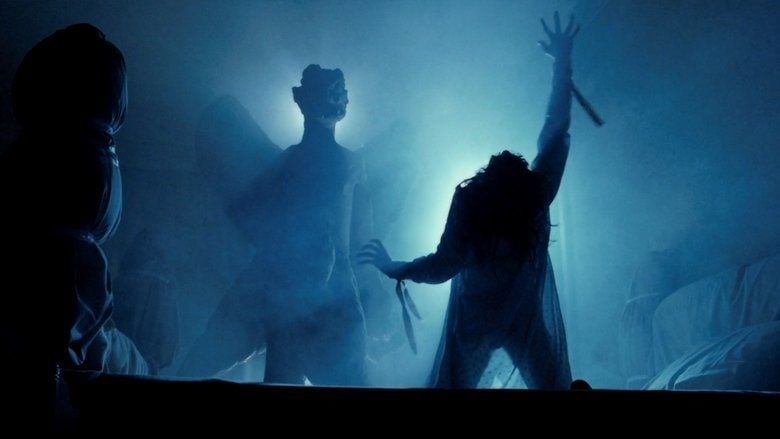
Lankester Merrin is a veteran Catholic priest and exorcist who is on an archaeological dig in Iraq (the ancient city of Hatra, a Unesco world heritage site). There he finds an amulet that resembles the statue of Pazuzu, a demon whom Merrin had defeated years before. Merrin then realizes the demon has returned to seek revenge.
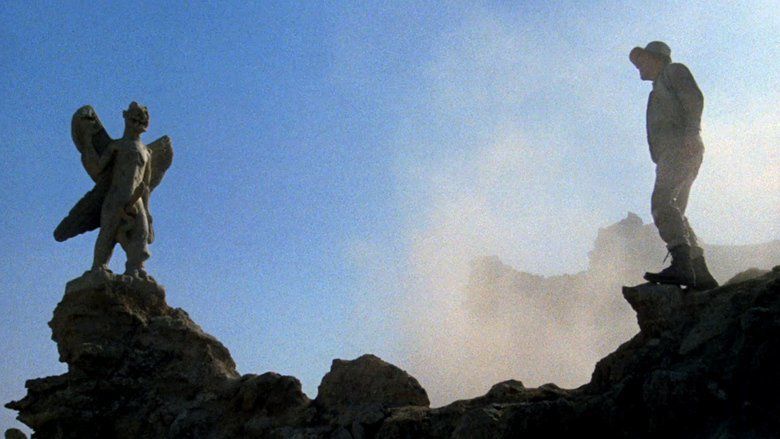
Meanwhile, in Georgetown, actress Chris MacNeil is living on location with her 12-year-old daughter Regan, where Chris has just wrapped the final scene of a film about student activism directed by her friend and associate Burke Dennings. After playing with a Ouija board and contacting a supposedly imaginary friend whom she calls Captain Howdy, Regan begins acting strangely, including making mysterious noises, stealing, constantly using obscene language, and exhibiting abnormal strength. Chris hosts a party, only for Regan to come downstairs unannounced, telling one of the guests, who is an astronaut, "You're gonna die up there", and then urinating on the floor. Regan's bed also begins to shake violently, much to her and her mother's horror. Chris consults multiple physicians, but Dr. Klein and his associates find nothing medically wrong with her daughter, despite Regan undergoing a battery of diagnostic tests.
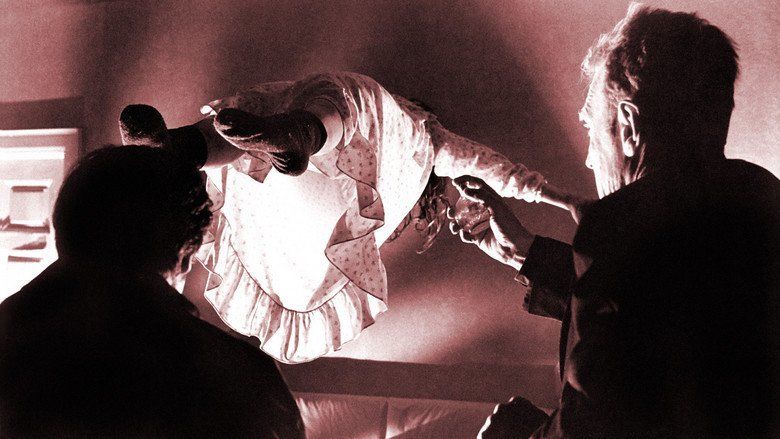
One night when Chris is out, Burke Dennings is babysitting Regan, only for Chris to come home to hear he has died falling out the window. Although this is assumed to have been an accident, given Burke's history of heavy drinking, his death is investigated by Lieutenant William Kinderman, who interviews Chris, as well as priest and psychiatrist Father Damien Karras, who has had his faith in God severely weakened and left badly shaken after the death of his frail mother.

The doctors, thinking that Regan only believes she is possessed, recommend an exorcism to be performed. Chris arranges a meeting with Karras. After recording Regan speaking backwards and witnessing the etching of the words "Help Me" on her stomach, Karras is convinced Regan is possessed. Believing her soul is in danger, he decides to perform an exorcism. The experienced Merrin is selected to do so instead, with Karras present to assist.
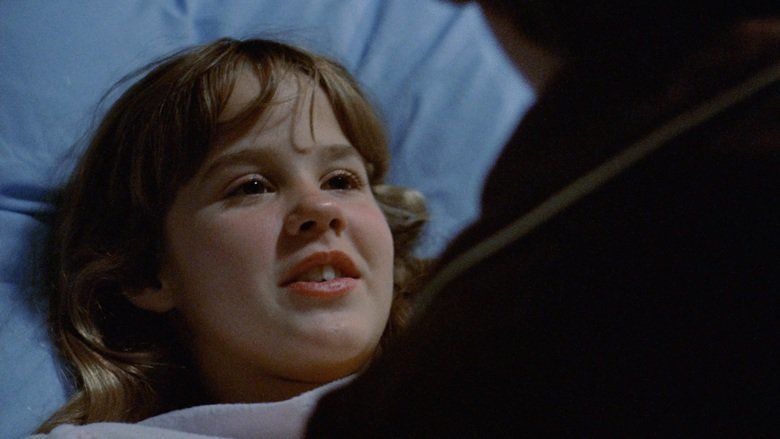
Both priests witness Regan perform a series of bizarre, vulgar acts, and confine her to her bedroom. They attempt to exorcise the demon, but a stubborn Pazuzu toys with them, especially Karras. Karras shows weakness, and is dismissed by Merrin, who attempts the exorcism alone. Karras enters the room and discovers Merrin has died of a heart attack. After failing to revive Merrin, the enraged Karras confronts the mocking, laughing spirit of Pazuzu, tackling the demon to the ground. At Karras's furious demand, Pazuzu then possesses Karras, leaving Regan's body. In a moment of self-sacrifice, the priest throws himself out of the window without allowing Pazuzu to compel him to harm Regan, and is himself mortally injured. Father Dyer, an old friend of Karras, happens upon the scene and administers the last rites to his friend.
A few days later Regan, who is now back to her normal self, prepares to leave for Los Angeles with her mother. Although Regan has no apparent recollection of her possession, she gives Father Dyer a kiss, a likely hint at posthumous thanks to Father Merrin and Father Karras. Kinderman, who narrowly misses their departure, befriends Father Dyer as he investigates Karras's death.
Cast
Writing
Aspects of Blatty's fictional novel were inspired by the 1949 exorcism performed on an anonymous young boy known as "Roland Doe" or "Robbie Mannheim" (pseudonyms) by the Jesuit priest Fr. William S. Bowdern, who formerly taught at both St. Louis University and St. Louis University High School. Doe's family became convinced the boy's aggressive behavior was attributable to demonic possession, and called upon the services of several Catholic priests, including Bowdern, to perform the rite of exorcism. It was one of three exorcisms to have been sanctioned by the Catholic Church in the United States at that time. Later analysis by paranormal skeptics has concluded that Doe was likely a mentally ill teenager acting out, as the actual events likely to have occurred (such as words being carved on skin) were such that they could have been faked by Doe himself. The novel changed several details of the case, such as changing the gender of the allegedly possessed victim from a boy into a girl and changing the alleged victim's age.
Although Friedkin has admitted he is very reluctant to speak about the factual aspects of the film, he made the film with the intention of immortalizing the events involving Doe that took place in St. Louis in 1949, and despite the relatively minor changes that were made, the film depicts everything that could be verified by those involved. In order to make the film, Friedkin was allowed access to the diaries of the priests involved, as well as the doctors and nurses; he also discussed the events with Doe's aunt in great detail. Friedkin has said that he does not believe that the "head-spinning" actually occurred, but this has been disputed. Friedkin, despite coming from a Jewish family, is not affiliated with any religion of any kind.
Casting
Although the agency representing Blair did not send her for the role, Blair's mother took her to meet with Warner Bros.'s casting department and then with Friedkin. Pamelyn Ferdin, a veteran of science fiction and supernatural drama, was a candidate for the role of Regan, but was ultimately turned down because her career thus far had made her too familiar to the public. April Winchell was considered, until she developed pyelonephritis, which caused her to be hospitalized and ultimately taken out of consideration. Denise Nickerson, who played Violet Beauregarde in Willy Wonka & the Chocolate Factory, was considered, but the material troubled her parents too much, and they pulled her out of consideration. Anissa Jones, known for her role as Buffy in Family Affair, auditioned for the role, but she too was rejected, for much the same reason as Ferdin. The part went instead to Blair, a relative unknown until the film's success.
The question of whether or not such a young actress, even a talented one, could carry the film on her shoulders was an issue from the beginning, with film directors asked to do the project such as Mike Nichols being skeptical. As well, the studio wanted Marlon Brando for the role of Father Lankester Merrin. Friedkin immediately vetoed this by stating it would become a "Brando movie." Jack Nicholson was up for the part of Karras before Stacy Keach was hired by Blatty. According to Friedkin, Paul Newman also wanted to portray Karras. Friedkin then spotted Miller following a performance of Miller's play That Championship Season in New York. Even though Miller had never acted in a film, Keach's contract was bought out by Warner Brothers, and Miller was signed.
Jane Fonda, Audrey Hepburn, and Anne Bancroft were under consideration for the role of Chris. Blatty also suggested his friend, Shirley MacLaine, for the part, but Friedkin was hesitant to cast her, given her lead role in another possession film, The Possession of Joel Delaney (1971) two years prior. Ellen Burstyn received the part after she phoned Friedkin and emphatically stated she was going to play Chris.
Friedkin originally intended to use Blair's voice, electronically deepened and roughened, for the demon's dialogue. Although Friedkin felt this worked fine in some places, he felt scenes with the demon confronting the two priests lacked the dramatic power required and selected legendary radio actress Mercedes McCambridge, an experienced voice actress, to provide the demon's voice. After filming, Warner Brothers did not include a credit for McCambridge during early screenings of the film, which led to Screen Actors Guild arbitration before she was credited for her performance. Ken Nordine was also considered for the demon's voice, but Friedkin thought it would be best not to use a man's voice.
Direction
Warners had approached Arthur Penn, Stanley Kubrick, and Mike Nichols, to direct, all of whom turned the project down. Originally Mark Rydell was hired to direct, but William Peter Blatty insisted on Friedkin instead, because he wanted his film to have the same energy as Friedkin's previous film, The French Connection. After a standoff with the studio, which initially refused to budge over Rydell, Blatty eventually got his way. Principal photography for The Exorcist began on August 21, 1972. The shooting schedule was estimated to run 105 days, but ultimately ran well over 200.
Friedkin went to some extraordinary lengths, reminiscent of some directors from the old Hollywood directing style, manipulating the actors, to get the genuine reactions he wanted. Yanked violently around in harnesses, both Blair and Burstyn suffered back injuries and their painful screams went right into the film. Burstyn injured her back after landing on her coccyx when a stuntman jerked her via cable during the scene when Regan slaps her mother. According to the documentary Fear of God: The Making of the Exorcist, however, the injury did not cause permanent damage, although Burstyn was upset the shot of her screaming in pain was used in the film. After asking Father William O'Malley if he trusted him and being told yes, Friedkin slapped him hard across the face before a take to generate a deeply solemn reaction that was used in the film as a very emotional Father Dyer read last rites to Father Karras; this offended the many Catholic crew members on the set. He also fired blanks without warning on the set to elicit shock from Jason Miller for a take, and only told Miller that pea soup would hit him in the chest rather than the face concerning the projectile-vomiting scene, resulting in his disgusted reaction. Lastly, he had Regan's bedroom set built inside a freezer so that the actors' breath could be visible on camera, which required the crew to wear parkas and other cold-weather gear.
Filming
The film's opening sequences were filmed in and near the city of Mosul, Iraq. The archaeological dig site seen at the film's beginning is the actual site of ancient Hatra, south of Mosul.
The "Exorcist stairs" are concrete stairs located in Georgetown at the corner of Prospect St NW and 36th St NW, leading down to M Street NW. The stairs were padded with 1/2"-thick rubber to film the death of the character Father Karras. Because the house from which Karras falls is set back slightly from the stairs, the film crew constructed an extension with a false front to the house in order to film the scene. The stuntman tumbled down the stairs twice. Georgetown University students charged people around $5 each to watch the stunt from the rooftops.
Although the film is set in Washington, D.C., many interior scenes were shot in various parts of New York City. The MacNeil residence interiors were filmed at CECO Studios in Manhattan. The bedroom set had to be refrigerated to capture the authentic icy breath of the actors in the exorcising scenes. The temperature was brought so low that a thin layer of snow fell onto the set one morning. Blair, who was only in a thin nightgown, says to this day she cannot stand being cold. Exteriors of the MacNeill house were filmed at 36th and Prospect in Washington, using a family home and a false wall to convey the home's thrust toward the steps.
The scenes involving Regan's medical tests were filmed at New York University Medical Center and were performed by actual medical staff that normally carry out the procedures. In the film Regan first undergoes an electroencephalography (EEG), then an early type of cerebral angiography and finally a pneumoencephalography.
The scene in which Father Karras listens to the tapes of Regan's dialogue were filmed in the basement of Keating Hall at Fordham University in the Bronx. William O'Malley, who plays Father Joseph Dyer in the film, was a real-life Jesuit and assistant professor of theology at Fordham at the time.
The interior of Karras' room at Georgetown was a meticulous reconstruction of Theology professor Father Thomas M. King, S.J.'s "corridor Jesuit" room in New North Hall. Fr. King's room was photographed by production staff after a visit by Blatty, a Georgetown graduate, and Friedkin. Upon returning to New York, every element of King's room, including posters and books, was recreated for the set, including a poster of Pierre Teilhard de Chardin, S.J., a paleontologist on whom the character of Fr. Merrin was loosely based. Georgetown was paid $1,000 per day of filming, which included both exteriors, such as Burstyn's first scene, shot on the steps of the Flemish Romanesque Healy Hall, and interiors, such as the defilement of the statue of the Virgin Mary in Dahlgren Chapel, or the Archbishop's office, which is actually the office of the president of the university. One scene was filmed in The Tombs, a student hangout across from the steps that was founded by a Blatty classmate.
Father Merrin's arrival scene
Father Merrin's arrival scene was filmed on Max von Sydow's first day of work. The scene where the elderly priest, Father Merrin (portrayed by Max von Sydow) steps out of a cab and stands in front of the MacNeil residence, between the open gates of the driveway — silhouetted in a misty streetlamp's glow and staring up at an intense beam of light shining from a bedroom window above — is one of the most famous scenes in the movie. The shot was used for film posters and home DVD/VHS release covers. The scene and photo was inspired by the 1954 painting "Empire of Light" ("L'Empire des lumières") by René Magritte.
The spider-walk scene
Stuntwoman Ann Miles performed the spider-walk scene in November 1973. Director Friedkin deleted this scene just prior to the December 26, 1973 premiere, as he judged the scene as appearing too early in the film's plot and chose to remove it, despite screenplay writer William Peter Blatty's objection. In the book, the spider-walk is somewhat more muted, consisting of Regan following Sharon around near the floor and flicking a snake-like tongue at her ankles.
Special effects
The Exorcist contained a number of special effects, engineered by makeup artist Dick Smith. In one scene from the film, Max von Sydow is actually wearing more makeup than the possessed girl (Linda Blair). This was because director Friedkin wanted some very detailed facial close-ups. When this film was made, von Sydow was 44, though he was made up to look 74. Alan McKenzie stated in his book Hollywood Tricks of the Trade that the fact "that audiences didn't realize von Sydow was wearing makeup at all is a tribute to the skills of veteran makeup artist Dick Smith."
Alleged subliminal imagery
The Exorcist was also at the center of controversy due to its alleged use of subliminal imagery introduced as special effects during the production of the film. Wilson Bryan Key wrote a whole chapter on the film in his book Media Sexploitation alleging multiple uses of subliminal and semi-subliminal imagery and sound effects. Key observed the use of the Pazuzu face (in which Key mistakenly assumed it was Jason Miller made up in a death mask makeup) and claimed that the safety padding on the bedposts were shaped to cast phallic shadows on the wall and that a skull face is superimposed into one of Father Merrin's breath clouds. Key also wrote much about the sound design, identifying the use of pig squeals, for instance, and elaborating on his opinion of the subliminal intent of it all. A detailed article in the July/August 1991 issue of Video Watchdog examined the phenomenon, providing still frames identifying several uses of subliminal "flashing" throughout the film. In an interview from the same issue, Friedkin explained, "I saw subliminal cuts in a number of films before I ever put them in The Exorcist, and I thought it was a very effective storytelling device... The subliminal editing in The Exorcist was done for dramatic effect—to create, achieve, and sustain a kind of dreamlike state." However, these quick, scary flashes have been labeled "[not] truly subliminal" and "quasi-" or "semi-subliminal". In an interview in a 1999 book about the film, The Exorcist author Blatty addressed the controversy by explaining that, "There are no subliminal images. If you can see it, it's not subliminal."
Titles
The editing of the title sequence was the first major project for the film title designer Dan Perri. As a result of the success of The Exorcist, Perri went on to design opening titles for a number of major films including Taxi Driver (1976), Star Wars (1977) and Gangs of New York (2002).
Music
Lalo Schifrin's working score was rejected by Friedkin. Schifrin had written six minutes of music for the initial film trailer but audiences were reportedly too scared by its combination of sights and sounds. Warner Bros. executives told Friedkin to instruct Schifrin to tone it down with softer music, but Friedkin did not relay the message. It has been claimed Schifrin later used the music written for The Exorcist for The Amityville Horror, but he has denied this in interviews. According to "The Fear of God: The Making of the Exorcist" on the 25th Anniversary DVD release of the film, Friedkin (known for his temper) literally took the tapes that Schifrin had recorded and threw them away in the studio parking lot.
In the soundtrack liner notes for his 1977 film, Sorcerer, Friedkin said had he heard the music of Tangerine Dream earlier, he would have had them score The Exorcist. Instead, he used modern classical compositions, including portions of the 1972 Cello Concerto No. 1, of Polymorphia, and other pieces by Polish composer Krzysztof Penderecki, Five Pieces for Orchestra by Austrian composer Anton Webern as well as some original music by Jack Nitzsche. The music was heard only during scene transitions. The 2000 "Version You've Never Seen" features new original music by Steve Boddacker, as well as brief source music by Les Baxter.
What is now considered the Theme from The Exorcist, Tubular Bells by Mike Oldfield, became very popular after the film's release. Oldfield himself said he was not impressed with how his work was used in the film.
In 1998 a restored and remastered soundtrack was released by Warner Bros. (without Tubular Bells) that included three pieces from Lalo Schifrin's rejected score. The pieces are "Music from the unused Trailer", an 11-minute "Suite from the Unused Score", and "Rock Ballad (Unused Theme)".
That same year, the Japanese version of the original soundtrack LP did not include the Schifrin pieces but did include the main theme Tubular Bells by Mike Oldfield, and The movement Night of the Electric Insects from George Crumb's string quartet Black Angels.
The Greek song playing on the radio when Father Karras leaves his mother's house is called "Paramythaki mou" (My Tale) and is sung by Giannis Kalatzis. Lyric writer Lefteris Papadopoulos has admitted that a few years later when he was in financial difficulties he asked for some compensation for the intellectual rights of the song. Part of Hans Werner Henze's 1966 composition Fantasia for Strings is played over the closing credits.
Release
Upon its December 26, 1973, release, the film received mixed reviews from critics, "ranging from 'classic' to 'claptrap'."
Special edition 25th anniversary VHS and DVD release
A limited special edition box set was released in 1998 for the film's 25th anniversary; it was limited to 50,000 copies, with available copies circulating around the Internet. There are two versions: a special edition VHS released on November 10, 1998, and a special edition DVD released on December 1, 1998. The only difference between the two copies is the recording format.
DVD features
Box features
Extended edition DVD releases
The extended edition labeled "The Version You've Never Seen" (which was released theatrically in 2000) was released on DVD on February 3, 2004.
The extended edition was later re-released on DVD (and released on Blu-ray) with slight alterations under the new label "Extended Director's Cut" on October 5, 2010.
Blu-ray
In an interview with DVD Review, Friedkin mentioned that he was scheduled to begin work on The Exorcist Blu-ray on December 2, 2008. This edition features a new restoration, including both the 1973 theatrical version and the 2000 "Version You've Never Seen" (re-labeled as "Extended Director's Cut"). It was released on October 5, 2010. A 40th Anniversary Edition Blu-ray was released on October 8, 2013, containing both cuts of the film and many of the previously released bonus features in addition to two featurettes that revolve around author William Peter Blatty.
The Exorcist: The Complete Anthology
The Exorcist: The Complete Anthology (box set) was released on DVD on October 10, 2006, and on Blu-ray on September 23, 2014. This collection includes the original theatrical release version of The Exorcist, the extended version (labelled The Exorcist: The Version You've Never Seen on the DVD release and The Exorcist: Extended Director's Cut on the Blu-ray release), the sequels Exorcist II: The Heretic and The Exorcist III, and the prequels Exorcist: The Beginning and Dominion: Prequel to the Exorcist.
Box office
The film earned $66.3 million in distributors' domestic (US/CAN) rentals during its theatrical release in 1974, becoming the second most popular film of that year (trailing The Sting). After several reissues, the film eventually grossed $232,671,011 in North America, which if adjusted for inflation, would be the ninth highest-grossing film of all time and the top-grossing R-rated film of all time. To date, it has a total gross of $441,071,011 worldwide.
Critical response
Stanley Kauffmann, in The New Republic, wrote, "This is the scariest film I've seen in years—the only scary film I've seen in years ... If you want to be shaken—and I found out, while the picture was going, that that's what I wanted—then The Exorcist will scare the… (shit) out of you." Variety noted that it was "an expert telling of a supernatural horror story ... The climactic sequences assault the senses and the intellect with pure cinematic terror." In Castle of Frankenstein, Joe Dante called it "an amazing film, and one destined to become at the very least a horror classic. Director Friedkin's film will be profoundly disturbing to all audiences, especially the more sensitive and those who tend to 'live' the movies they see ... Suffice it to say, there has never been anything like this on the screen before." Roger Ebert gave the film a 4-out-of-4 star review, praising the actors (particularly Burstyn) and the convincing special effects but at the end of the review wrote, "I am not sure exactly what reasons people will have for seeing this movie; surely enjoyment won’t be one, because what we get here aren’t the delicious chills of a Vincent Price thriller, but raw and painful experience. Are people so numb they need movies of this intensity in order to feel anything at all?"
The reviews were not all positive, however. Vincent Canby, writing in The New York Times, dismissed The Exorcist as "a chunk of elegant occultist claptrap ... a practically impossible film to sit through ... It establishes a new low for grotesque special effects ..." Andrew Sarris complained that "Friedkin's biggest weakness is his inability to provide enough visual information about his characters ... whole passages of the movie's exposition were one long buzz of small talk and name droppings ... The Exorcist succeeds on one level as an effectively excruciating entertainment, but on another, deeper level it is a thoroughly evil film." Writing in Rolling Stone, Jon Landau felt the film was "nothing more than a religious porn film, the gaudiest piece of shlock this side of Cecil B. DeMille (minus that gentleman's wit and ability to tell a story) ... "
Over the years, The Exorcist's critical reputation has grown considerably. The film currently has an 87% "Certified Fresh" approval rating on the Rotten Tomatoes website, based on 67 reviews the website collected. Chicago Tribune film critic Gene Siskel placed it in the top five films released that year. BBC film critic Mark Kermode believes the film to be the best film ever made saying "There's a theory that great films give back to you whatever it is you bring to them. It's absolutely true with The Exorcist—it reflects the anxieties of the audience. Some people think it's an outright horror-fest, but I don't. It was written by a devout Catholic who hoped it would make people think positively about the existence of God. William Peter Blatty, who wrote the book, thought that if there are demons then there are also angels and life after death. He couldn't see why people thought it was scary. I've seen it about 200 times and every time I see something I haven't seen before."
Director Martin Scorsese placed The Exorcist on his list of the 11 scariest horror films of all time. In 2008, the film was selected by Empire Magazine as one of The 500 Greatest Movies Ever Made. It was also placed on a similar list of 1000 films by The New York Times.
UK reception
The Exorcist was available on home video from the early 1980s in the UK. After the British Board of Film Classification created the Video Recordings Act in 1984, the film was submitted for a home video certificate. James Ferman, Director of the Board, vetoed the decision to grant a certificate to the film, despite the majority of the group willing to pass it. It was out of Ferman's concerns that, even with a proposed 18 certificate, the film's notoriety would entice underage viewers to seek it out. As a result, all video copies of The Exorcist were withdrawn in the UK and remained unavailable for purchase for more than a decade.
Following a successful re-release in cinemas in 1998, the film was submitted for home video release again in February 1999, and was passed uncut with an 18 certificate, signifying a relaxation of the censorship rules with relation to home video in the UK, in part due to James Ferman's departure. The film was shown on terrestrial television in the UK for the first time in 2001, on Channel 4.
Audience reception
Roger Ebert, while praising the film, believed the special effects to be so unusually graphic he wrote, "That it received an R rating and not the X is stupefying." Some theaters provided "Exorcist barf bags".
Academy Awards
The Exorcist was nominated for ten Academy Awards in 1974, winning two. It is the first horror film to be nominated for Best Picture. At the 46th Annual Academy Awards ceremony, the film won two statuettes (highlighted in bold).
The film was nominated for:
Golden Globe Awards
The Exorcist was nominated for seven total Golden Globes in 1974. At the 31st Golden Globes ceremony that year, the film won four awards.
The film was nominated for
Library of Congress
American Film Institute Lists
Alternate and uncut versions
Several versions of The Exorcist have been released:
In 1998, Warner re-released the digitally remastered DVD of The Exorcist: 25th Anniversary Special Edition. The DVD includes the BBC documentary, The Fear of God: The Making of The Exorcist, highlighting the never-before-seen original non-bloody variant of the spider-walk scene.
To appease the screenwriter and some fans of The Exorcist, Friedkin reinstated the bloody variant of the spider-walk scene for the 2000 theatrically re-released version of The Exorcist: The Version You've Never Seen. In October 2010, Warner released The Exorcist (Extended Director's Cut & Original Theatrical Edition) on Blu-ray, including the behind-the-scenes filming of the spider-walk scene. Linda R. Hager, the lighting double for Linda Blair, was incorrectly credited for performing the stunt. In 2015, Warner Bros. finally acknowledged that stuntwoman Ann Miles was the only person who performed the stunt.
References
The Exorcist (film) WikipediaThe Exorcist (film) IMDbThe Exorcist (film) Rotten TomatoesThe Exorcist (film) MetacriticThe Exorcist (film) themoviedb.org
